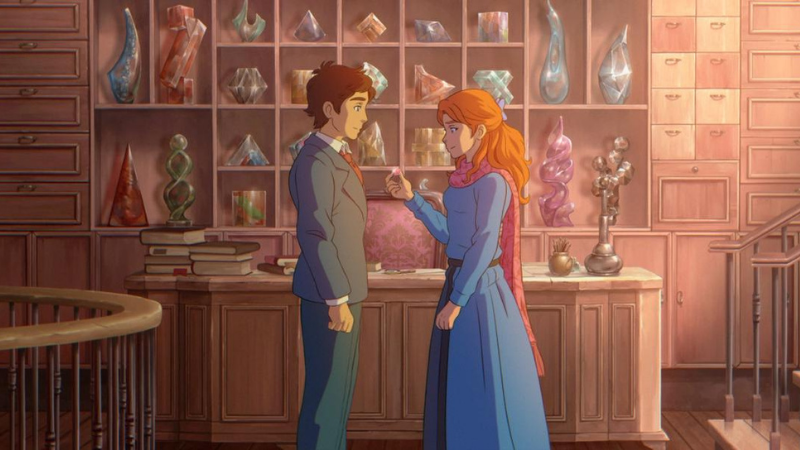Introduction to “The Glassworker”
“The Glassworker” marks a monumental achievement in the history of Pakistani cinema as the nation’s first animated feature film. Spearheaded by Usman Riaz, a prodigious artist and musician, the film is produced by Mano Animation Studios, a company founded with the express intent of showcasing the untapped potential within Pakistan’s animation industry. The production timeline of “The Glassworker” has been a journey of dedication and passion, spanning several years from its conceptualization to completion. The film’s initial reception has been overwhelmingly positive, garnering attention not just within Pakistan but also on international platforms.
The plot of “The Glassworker” revolves around the intricate and delicate art of glassblowing, with the story set in a quaint, picturesque town. The protagonist, Vincent, is a young glassblower who inherits his father’s glass shop. The narrative beautifully intertwines his coming-of-age journey with his deepening friendship and eventual romantic relationship with Alliz, a violinist. The film meticulously captures their personal growth against the backdrop of socio-political changes, providing a rich tapestry of emotions and experiences.
What sets “The Glassworker” apart is not just its innovative animation but also its deep cultural resonance. The creators have painstakingly worked to ensure that the film reflects authentic elements of Pakistani culture, from the traditional attire and architectural styles to the music that serves as an emotional undertone throughout the narrative. The characters are crafted with a blend of universal relatability and unique cultural specificity, making the film a poignant reflection of both individual and collective experiences. This careful attention to detail has contributed to the film’s warm reception and its potential to make a lasting impact on both the local and global stages.
Cultural Significance in Pakistan
“The Glassworker” stands as a landmark in Pakistani cinema, not only as the country’s first animated feature but also as a profound reflection of Pakistani culture, traditions, and values. The film’s storyline intricately weaves elements of local folklore, art, and social norms, offering a unique window into the nation’s cultural tapestry. By showcasing characters and settings that are deeply rooted in Pakistani heritage, “The Glassworker” offers audiences an authentic representation of their own stories and experiences, fostering a sense of pride and identity.
One of the key cultural contributions of “The Glassworker” lies in its ability to highlight traditional Pakistani art forms. The meticulous animation process brings to life the intricate details of glassblowing, a craft that, while not traditionally highlighted in mainstream media, holds significant cultural value. This focus on traditional craftsmanship not only educates the audience about lesser-known aspects of Pakistani culture but also preserves and promotes these art forms for future generations.
Moreover, the film’s narrative is steeped in values that resonate deeply with the local audience, such as familial bonds, honor, and resilience. These universal themes are portrayed through a distinctly Pakistani lens, making them relatable and impactful for viewers. By addressing contemporary issues within a cultural context, “The Glassworker” bridges the gap between tradition and modernity, offering a narrative that is both timeless and relevant.
The cultural resonance of “The Glassworker” extends beyond its immediate audience. As a pioneering effort in Pakistani animation, the film sets a precedent for future projects, inspiring a new wave of artists and filmmakers. It demonstrates the potential of animation as a powerful medium for storytelling, capable of capturing the richness of Pakistani culture in a way that is accessible and engaging for both local and international audiences. Through its artistic and narrative achievements, “The Glassworker” paves the way for a vibrant future in Pakistani arts and cinema.
Social Impact and Representation
“The Glassworker,” as Pakistan’s first animated feature film, holds a significant place in the socio-cultural landscape of the country. This groundbreaking film does more than entertain; it addresses social issues that are often overlooked in mainstream media. By weaving a narrative that delves into the lives of everyday people, “The Glassworker” brings to the forefront the challenges and triumphs of diverse communities within Pakistan. The film’s portrayal of characters from various backgrounds helps to break down stereotypes and fosters a more inclusive understanding of Pakistani society.
One of the film’s most profound impacts is its influence on the youth of Pakistan. By presenting relatable characters and compelling storylines, “The Glassworker” encourages young viewers to reflect on their own lives and the social issues that affect their communities. This reflective process is crucial in nurturing a generation that is more aware and empathetic towards the socio-economic and cultural dynamics of their country. Furthermore, the film’s high production values and artistic excellence set a new standard for local content, inspiring young creators to pursue their passions and contribute to the burgeoning field of Pakistani animation.
In terms of national pride, “The Glassworker” serves as a cultural milestone. It showcases the potential of Pakistani talent on a global stage, demonstrating that local creators can produce work of international quality. This sense of achievement is not just limited to the entertainment industry; it extends to the broader artistic and cultural communities in Pakistan. The film’s success instills a sense of pride and accomplishment, reinforcing the idea that Pakistan can compete and excel in various creative domains.
Moreover, “The Glassworker” contributes significantly to the conversation about social change and progress in Pakistan. By addressing themes such as familial bonds, societal expectations, and individual aspirations, the film resonates with audiences on a deep emotional level. It challenges viewers to reconsider preconceived notions and inspires them to advocate for a more just and equitable society. In doing so, “The Glassworker” transcends its role as an animated feature, becoming a catalyst for meaningful social dialogue and transformation.
Significance in the Global Animation Industry
“The Glassworker” represents a pivotal moment for Pakistan within the global animation industry. As the country’s first animated feature film, it has garnered significant attention and acclaim, thereby positioning Pakistan on the global animation map. The film’s debut at various international film festivals has been met with enthusiastic receptions, highlighting the burgeoning talent emerging from this region. Critics and audiences alike have praised the film’s unique storytelling, artistic style, and cultural authenticity, which have distinguished it from other animated features.
Beyond its immediate success, “The Glassworker” has had a profound impact on the perception of Pakistani cinema worldwide. Historically, Pakistani films have faced challenges in gaining international recognition. However, this animated feature has showcased the country’s potential to produce high-quality, compelling content that resonates with a global audience. The film’s success has opened new avenues for Pakistani filmmakers and animators, providing them with a platform to share their narratives on a larger stage.
Moreover, “The Glassworker” has created substantial opportunities for future collaborations between Pakistani and international studios. The film’s success story has attracted the attention of global industry leaders, who are now more inclined to explore partnerships with Pakistani talent. Such collaborations can lead to a cross-pollination of ideas, techniques, and technologies, ultimately enriching the global animation landscape. For Pakistani animators and storytellers, this represents a chance to learn from and contribute to the broader industry, enhancing their skills and expanding their creative horizons.
In conclusion, “The Glassworker” has not only marked a significant milestone for Pakistan but has also contributed to the diversification and enrichment of the global animation industry. This breakthrough has paved the way for future projects, instilling a sense of optimism and ambition within the Pakistani animation community. The film’s success underscores the importance of cultural narratives in animation, proving that compelling stories can transcend borders and connect with audiences worldwide.
For more read our blog on Top 10 Anime Like The Glassworker





